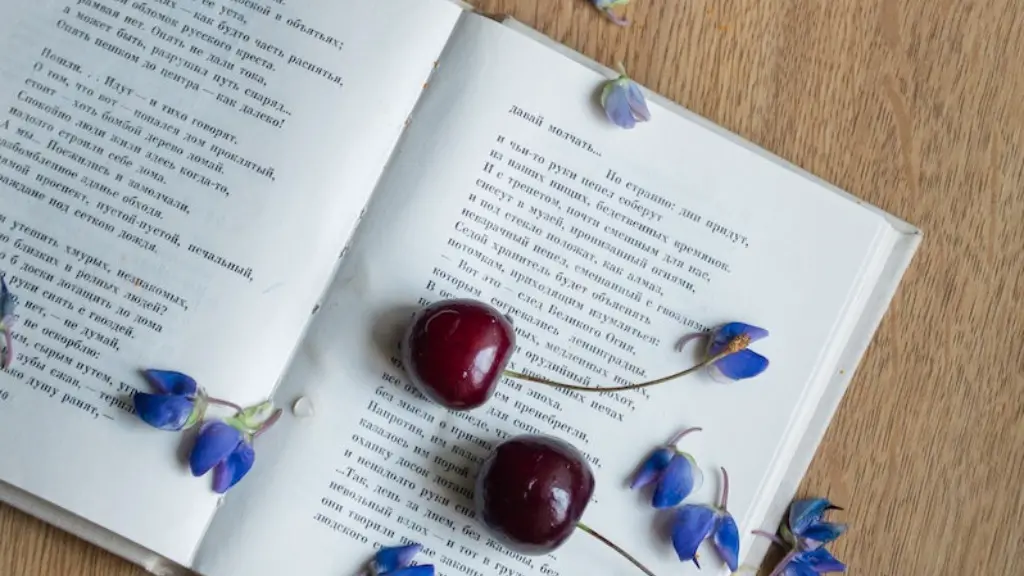Poetry is the use of language to express emotions and ideas and is an important part of English culture. Meters are patterns in which words are arranged in a poem. English poetry utilizes different meters but one, in particular, is the most common. Generally, this is referred to as iambic pentameter and is commonly seen in traditional English poetry.
Iambic pentameter is a meter that has alternating unstressed and stressed syllables. It has five sets of unstressed and stressed syllables for each line. This is why it is referred to as a pentameter, as there are five sets. The number of syllables varies for each line but there must be at least six and no more than 12 for each line.
As for why iambic pentameter is the most common meter in English poetry, this can most likely be attributed to its versatility. The iambic pentameter can fit a variety of different subject matters and it can be used to evoke a wide range of emotions. It also allows poets to play around with the meter and structure of their poems, allowing for greater creativity and artistry.
Experts in the English literary world agree that iambic pentameter is the traditional form of English poetry. It is also the form chosen by many of the greatest and most respected English poets. William Shakespeare is perhaps the best example. Many of his famous sonnets and plays such as “Hamlet” are written in iambic pentameter.
It isn’t just Shakespeare, however, as many other classic poets such as John Milton, Dylan Thomas and Robert Frost made use of iambic pentameter when writing. Even today, many contemporary poets make use of the iambic pentameter when trying to capture their desired message or emotion. As such, this traditional form is still seen as one of the best for English poetry.
Iambic pentameter brings a certain kind of rhythm and flow to a poem which can be quite mesmerizing. It isn’t a matter of following an exact rhythm, but rather an implied rhythm carried by the structure of the lines. This can add to the overall effect of the poem and make it greatly more enjoyable.
English literature is heavily impacted by poetry and its impact may be felt more in iambic pentameter than in any other English poetry meter. Although there may be less traditional forms of English poetry such as blank verse and free verse, they lack the emotional power of the iambic pentameter. As such, this meter is often seen as the more effective and impressive of the two.
Differences Between Iambic Pentameter and Other Meters
The iambic pentameter differs greatly from other meters in that it is bound by its rhythmic structure. Other meters such as ballad meter allow for greater flexibility in terms of the syllable structure, which can be both a blessing and a curse. With iambic pentameter, poets can create a set rhythmic structure to convey their desired effect or message in a consistent manner.
Iambic pentameter is also more suitable for traditional English poetry than its counterpart. This is because it allows for more complex ideas to be conveyed without having to resort to overly complex language. It can be seen as a middle ground that allows for great flexibility in expressing one’s ideas.
In terms of popularity, iambic pentameter is the clear winner. This is mostly due to its ability to create powerful messages and emotions. Its rhythmic structure also adds a particular kind of flow which is highly valued by many. Apart from that, there is also its long history in literary works which further adds to its legitimacy as the most popular meter for English poetry.
Practical Examples of Iambic Pentameter
A great example of the iambic pentameter in English poetry is William Shakespeare’s famous sonnet “Shall I compare thee to a summer’s day?” Here, he uses iambic pentameter to its fullest effect. Each line is written in the traditional iambic pentameter style, with alternating unstressed and stressed syllables. The poem is able to achieve its desired effect without having to rely heavily on complex language. This goes to show just how potent a tool the iambic pentameter can be.
Another classic example of iambic pentameter in action is John Milton’s epic poem “Paradise Lost”. Here, Milton uses the traditional iambic pentameter to convey his story of creation and the fall of man. By using iambic pentameter, Milton is able to provide an artistic image of the battle between good and evil. Through this, Milton is able to evoke strong emotions in the reader and create an unforgettable piece of work.
Many other classic works of English literature, such as poems by Dylan Thomas, Robert Frost and Wallace Stevens, also feature the iambic pentameter. By using iambic pentameter, these poets are able to provide insights into their chosen topics while still providing great artistic value. It is therefore clear why this meter is so important to English literature.
Influence of Iambic Pentameter
The iambic pentameter has been a major influence on modern English literature. Its versatility has allowed it to be used in a variety of works. Pride and Prejudice by Jane Austen, Wuthering Heights by Emily Bronte and Leaves of Grass by Walt Whitman are just some of the many works which use iambic pentameter to great effect. By using this meter, writers are able to evoke powerful emotions in their readers.
The iambic pentameter is also seen as an important part of modern music. Bob Dylan, Leonard Cohen, and Joni Mitchell are all musicians who make use of iambic pentameter in their songs. Its rhythmic structure allows for great artistic expression, which is why so many musicians choose to use it in their works.
Lastly, the iambic pentameter is also being used in modern television. Shows such as Game of Thrones and The Wire have featured scenes where characters make use of the iambic pentameter to great effect. This is an example of the meter being used in a more contemporary setting, which goes to show just how versatile and adaptable it is.
Style and Effect of Iambic Pentameter
The iambic pentameter is a meter that brings with it a sense of structure and consistency. It allows the writer to capture their desired emotion or effect in a consistent manner. However, the structure doesn’t have to be rigid and it can be used for various subject matters. This versatility can be seen as one of the reasons why it has been so popular throughout the centuries.
The iambic pentameter also allows for great artistic expression. Not only does it give the reader a sense of rhythm, but it can also be used to convey various messages. This is why so many classic works of English literature and modern works make use of it. The meter not only allows for greater artistic expression, but it can also add to the overall impact of the work.
The iambic pentameter has been the most popular form of English poetry for centuries and it isn’t likely to go away anytime soon. Its versatility and structure have allowed it to be used in a variety of works and to evoke a wide range of emotions. It is therefore no surprise why it has been so popular throughout the centuries and why it continues to be so today.
Conclusion of Iambic Pentameter
Iambic pentameter has been the traditional meter for English poetry for centuries. Its structure and versatility give it an edge over other meters and this is why it continues to be popular today. Its ability to evoke powerful emotions and convey complex ideas are what make it such an important part of English literature. Writers, musicians and actors all make use of it in their works and, in doing so, add to its importance. Iambic pentameter is thus an important meter that has greatly impacted English culture and literature and will undoubtedly continue to do so in the future.





